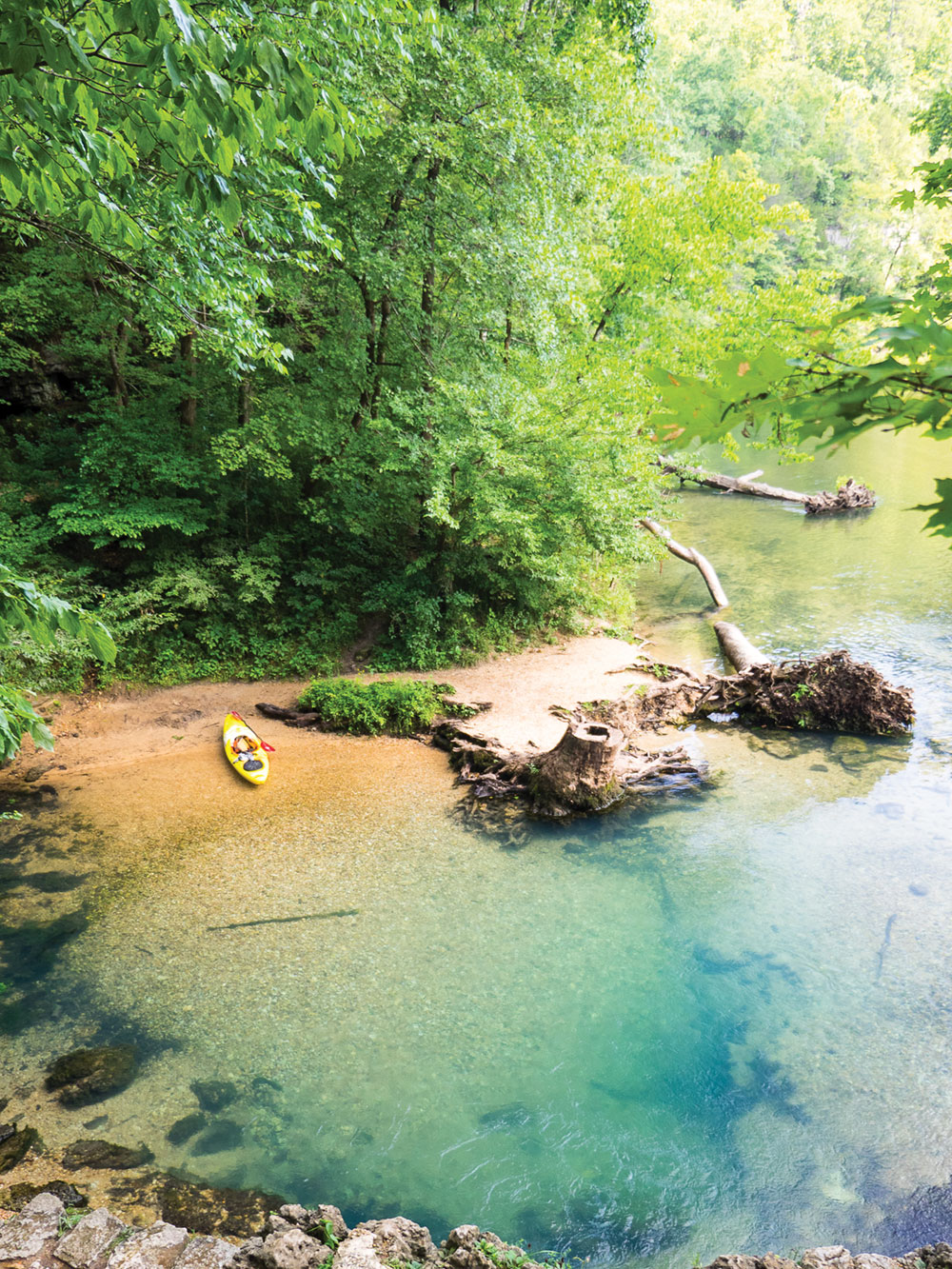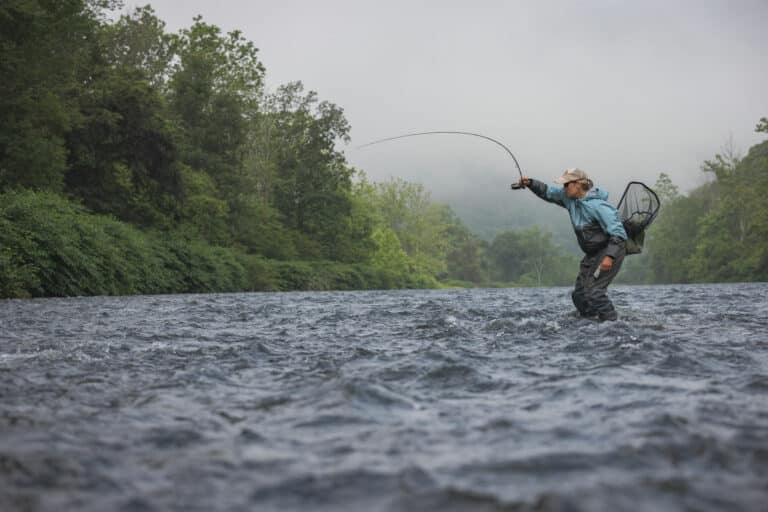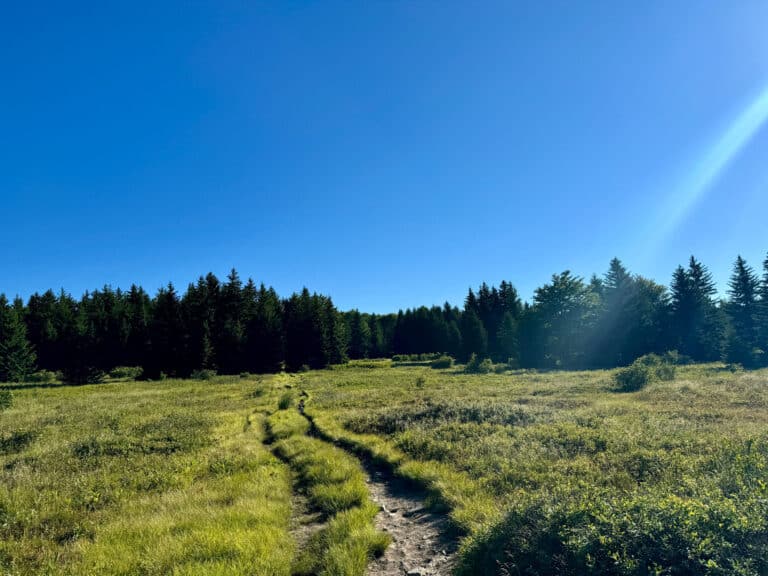Actually yes, the Highlands of Missouri and Arkansas offer a surprising abundance of world-class rivers.
“We definitely didn’t foresee paddling in the Ozarks becoming a destination,” messaged Olivia Harrell, a paddler living in Bryson City, N.C. “We have so many rivers in the Southeast that are literally in our backyard, but it is nice to explore something new.”
I was trying to answer the question, is paddling in the Ozarks worth the trip for someone from the Southeast? I’d been asking around for a few days, hoping to find some Southeastern paddlers who had made the trip. But, so far, I’d come up empty. I already had my own answer to the question, but I was biased. I spent 10 years living in the area before moving to the Southeast.
By many accounts, the Southeast is the paddling capital of the U.S., especially when it comes to whitewater. It’s a part of the country that paddlers travel to from afar for boating. And some, including Olivia, become so smitten with the Southeast they never leave.
Sure, many Southeastern river junkies make it a personal mission to hit up the country’s other paddling hotspots. The Arkansas River in Colorado, for example. The Tuolumne and other High Sierra runs in California. Big desert rivers like the Green in Utah. Multiday trips like the Salmon in Idaho. Or the trip of a lifetime down the Colorado through Grand Canyon. Most paddlers know those trips are worth traveling for.
But what about traveling to paddle in some of the lesser-known regions across the country? Where paddling is a passion among locals, but where the topography is less dramatic than mountain ranges like the Appalachians or Rockies? One such region is the Ozarks.
Olivia’s sentiments about the Ozarks matched my own observations. I was a 25-year-old raft guide when I moved from California to St. Louis for grad school. I arrived with a kayak on the roof of my truck and a vague idea there were some float trips in the Ozarks. But I didn’t even know what the Ozarks were. I figured I’d spend most of my time driving down to the Southeast for paddling.
Like me, at first, many Southeastern paddlers know so little about the Ozarks, they’re not even sure where they’re located. Part of the U.S. Interior Highlands, about two-thirds of the Ozarks are in southern Missouri. The remaining third—and the tallest part of the Ozarks, with elevations topping out around 2,500 feet—is in northern Arkansas. To be honest, I prefer to think of the Ozarks as a series of very rugged, rolling hills.
For the most part, the Ozarks are an eroded limestone plateau. When combined with annual precipitation around 50 inches, the result is pervasive karst topography. If that sounds suspiciously exotic for the Midwest, you’ll be even more surprised by the result. Plunging sinkholes, limestone caves, underground streams, and countless freshwater springs bursting year-round from cliffs.
In fact, there are so many springs, they seem to have run out of names. There are multiple Boiling Springs, Round Springs, Cave Springs, Ebb and Flow Springs. If you ever get the wild idea to navigate across the Ozarks using nothing but Blue Springs? Just forget it. You’ll go in circles more than Southeastern paddlers during a brewery tour of Asheville.
Another result of all this flowing water may surprise you, as well. Two National Park units protect three phenomenal rivers—the Current and Jacks Fork in Missouri and the Buffalo in Arkansas. Plus, there are seven additional Ozark rivers designated in the Wild & Scenic Rivers system. Each of these spring-fed rivers, plus dozens more, are undammed, natural flowing, and run year-round. That means the rivers are cool and clear even during the sweltering summer months. Most of these rivers are class I-II and appropriate for all levels of paddlers. Though, some runs are class II-III and there are even a few class III-IV creeks.
To verify my assertion that paddling in the Ozarks is worth a trip, I reached out to Olivia. Last year she became an ambassador for UST Gear, a Missouri-based outdoor company. Olivia is originally from Springfield, in the heart of the Ozarks, but she wasn’t exposed to paddling when she was young. Instead, like many aspiring diehards, she moved to the Southeast to become a paddler. When she took the UST job, one requirement was paddling in the Ozarks with company brand manager and friend, John Holdmeier.
Before moving back to Missouri and retooling the UST Brand, John spent five seasons living in the Southeast, working at the Nantahala Outdoor Center. When the opportunity came to bring in brand ambassadors at UST, he was excited to share the rivers of his youth.
“It feels good to let someone in on your favorite rivers,” explained John. “There are many similarities between the Southeast and the Ozarks. [They’re] like a smaller version of the Smokies, in my opinion. The big difference is the springs and the protected rivers. This means the water is clear and consistent year-round.”
When Olivia visited this past spring with her boyfriend, a fellow UST ambassador from Kentucky, the trio did an overnight paddling trip on the Current River in Ozark National Scenic Riverways.
“Paddling in the Ozarks was scenic and secluded,” recalls Olivia. “We were impressed by the clarity of the water, the wildlife, and the wildflowers. The rivers are more wilderness instead of roadside access. The whitewater is not as exciting as some of the rivers in the Southeast but there are many scenic bluffs and trees. We will absolutely be traveling back to the Ozarks for move overnight paddling trips.”
When to Go
Because of the abundant spring flow, you can paddle in the Ozarks year-round. Summer weekends can be busy and rowdy, so mid-week or shoulder season is often preferred. Paddling during springtime or fall colors, typically the latter half of October into early November, can be particularly appealing.
Where to Go
For paddlers from the Southeast, consider the Eastern Missouri Ozarks, including the Current and Jacks Fork in Ozark National Scenic Riverways and the Eleven Point National Scenic River. During springtime, check out Big Piney Creek, a Wild & Scenic river, or the Buffalo National River, both in Western Arkansas.
Learn More
For a guide to 40 of the region’s best paddling trips, check out Paddling the Ozarks by Mike Bezemek.
Cover photo: The Ozarks hold seven spring-fed rivers designated in the wild & scenic rivers system. Photo by Mike Bezemek







